Embarking on a journey to Vietnam is more than just visiting a country; it’s an immersion into a rich tapestry of history, culture, and incredibly vibrant flavors. For years, I leaned away from guided tours, cherishing the romantic ideal of solitary exploration. Yet, a recent “Real Food Adventure” through Vietnam completely transformed my perspective. This trip offered unparalleled insights and experiences, forming the basis of these Notes When Traveling To Vietnam, gathered from the ground, person-to-person.
My fascination with Vietnam began unexpectedly in childhood, learning place names like Hanoi and Hue through news broadcasts of the war. This early, somber awareness eventually grew into a profound desire to visit, to see beyond the conflict, to connect with the people and the land. This journey, shared with family, became a small mission of personal understanding and appreciation.
Planning a comprehensive trip covering Hanoi, Halong Bay, Hue, Hoi An, the Mekong Delta, and Ho Chi Minh City felt daunting. The logistics, the scale, the nuances of a different culture – it was a lot to navigate. This is where a well-chosen guided tour proved invaluable, providing structure, local expertise, and easing the practical stresses, allowing for deeper engagement with the country itself.
Navigating the Vibrant Chaos
One of the first and most essential Notes When Traveling To Vietnam is mastering the art of street crossing. The sheer volume of motorbikes can be intimidating. Traffic signals are often ignored, and the flow is constant.
The key isn’t to wait for a gap, but to step out confidently and walk slowly and steadily across the street. The motorbikes will miraculously flow around you. Resist the urge to run or make sudden movements. Extending an arm with a flat palm can also help signal your presence. It’s a high-stakes dance, but you quickly get the hang of it, often with the reassuring presence of a local guide.
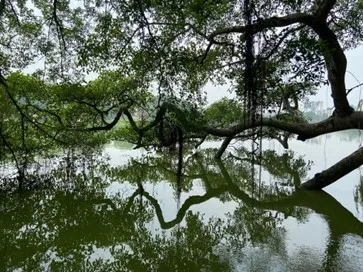 Beautiful banyan trees beside Hoan Kiem Lake in Hanoi, a peaceful contrast to the busy streets.
Beautiful banyan trees beside Hoan Kiem Lake in Hanoi, a peaceful contrast to the busy streets.
Discover the Best of What to Do in Downtown Denver – Your Ultimate Guide
Discover the Best Brunch in Denver – A Local’s Guide
Top 10 Places to Visit in Nevada with Family for an Epic Trip
Hanoi’s Old Quarter immediately envelops you in its energy. Wandering the narrow streets, lined with shops and buzzing with activity, is an experience in itself. Services like mani-pedis are readily available and often provide a moment of quiet relaxation amid the hustle, sometimes involving humorous communication via translation apps.
A Deep Dive into Vietnamese Cuisine
Vietnam is rightfully renowned for its food, and a “Real Food Adventure” tour takes this to a new level. Vietnamese cuisine is not just sustenance; it’s a core part of the cultural identity, reflecting history, geography, and local traditions.
Breakfast is often an extravagant affair, with hotel buffets offering everything from omelets and French rolls (banh mi) to fresh tropical fruit and, crucially, pho. Northern-style pho, typical in Hanoi, tends to be simpler with fewer garnishes than its Southern counterpart. Starting the day with a steaming bowl of noodle soup might seem unusual, but it’s incredibly comforting and energizing.
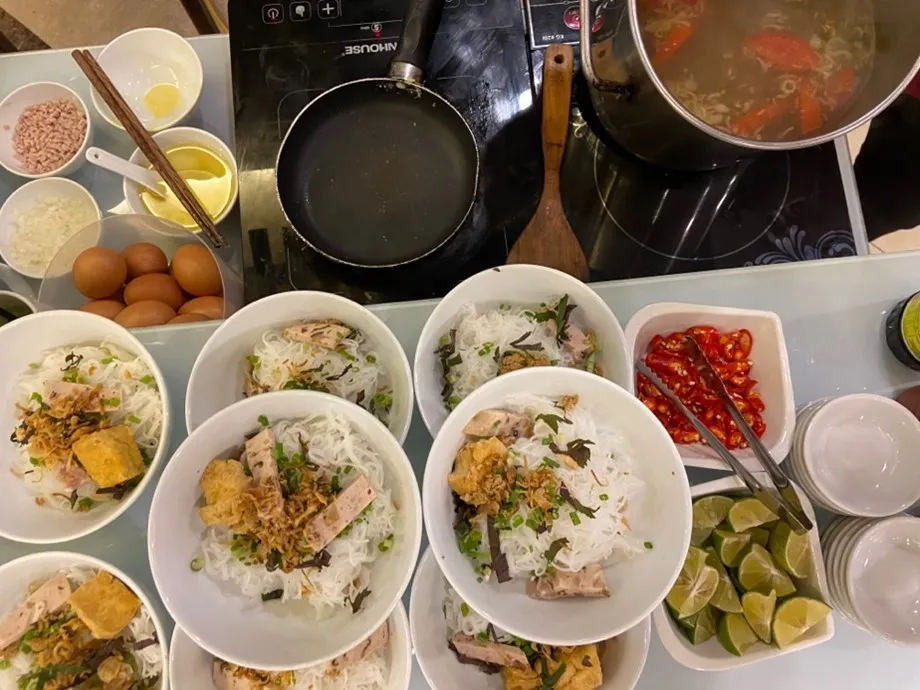 A classic Vietnamese breakfast spread featuring a steaming bowl of pho alongside an omelette at a Hanoi hotel.
A classic Vietnamese breakfast spread featuring a steaming bowl of pho alongside an omelette at a Hanoi hotel.
Exploring local markets, while sometimes overwhelming sensory experiences (especially the fish section!), provides insight into the fresh ingredients and daily life. Tasting local produce like banana flowers, dragonfruit, and longans is a must.
Beyond pho, the culinary journey includes delights like Banh Cuon (steamed rice-flour crepes), airy and flavorful, served with dipping sauce. Egg coffee, while perhaps a fleeting trend, is a rich, dessert-like experience worth trying. Even simple “Sweet Drinks,” layered concoctions of jellies, puddings, and coconut milk, offer a glimpse into local sweet treats, though they might be an acquired taste.
Cooking classes are a highlight, offering hands-on experience with fresh local ingredients. Learning to make dishes like fresh spring rolls, papaya salad, or fish steamed in banana leaves demystifies the cuisine and connects you directly to the source of the incredible flavors. Visiting places like the Spice Garden near HCMC shows the agricultural side of Vietnamese food, often incorporating organic practices and traditional methods.
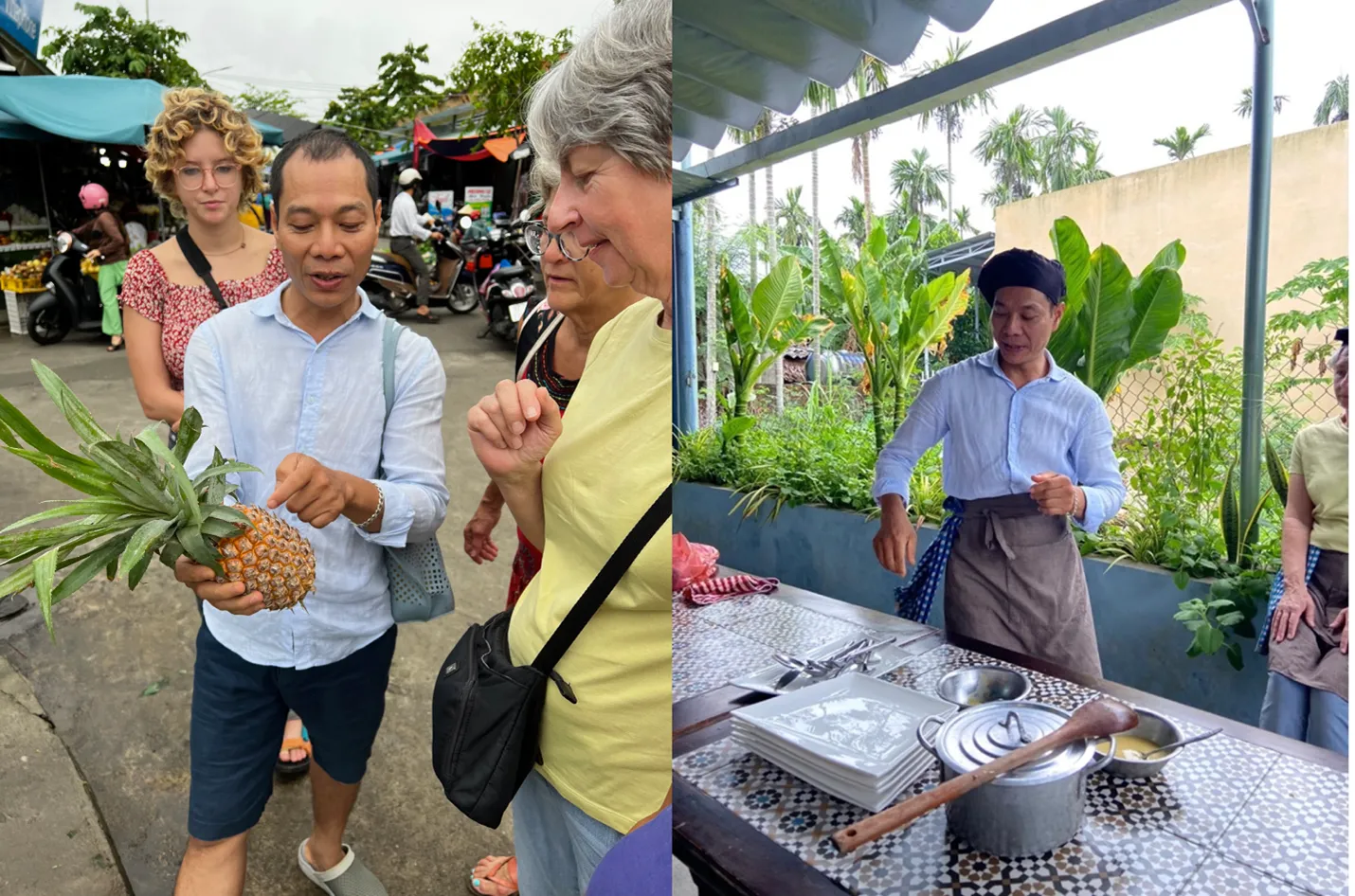 Participants in a Vietnamese cooking class preparing fresh ingredients and learning traditional techniques.
Participants in a Vietnamese cooking class preparing fresh ingredients and learning traditional techniques.
Eating at local family homes, as we did near Hue, is an unforgettable cultural and culinary experience. Sharing home-cooked meals, often featuring local specialties like fig salad or slow-cooked pork, while sitting with the family provides a genuine connection rarely found in restaurants.
Cultural Encounters and Historical Reflections
Vietnam’s history is complex and ever-present. While the Vietnam War (or American War, as it’s known locally) is a significant part of the past, the overwhelming sentiment I encountered was forward-looking and incredibly hospitable. Our guide, Bon, spoke simply, “We don’t worry about that anymore. You cannot change the past.” This perspective, shared by many, was genuinely surprising and deeply moving.
Visiting sites like the War Remnants Museum in Ho Chi Minh City is a powerful, albeit difficult, experience. It provides a raw look at the human cost of conflict, particularly the devastating impact on the Vietnamese people. It’s a necessary visit for understanding the country’s recent past, but it’s balanced by the vibrant present you witness everywhere else.
Historical sites like the Imperial City in Hue, the former home of the Nguyen dynasty, reveal Vietnam’s imperial past. While undergoing restoration, these sites offer a sense of the country’s long and rich history before the modern conflicts. Learning about the emperors, their lives, and even their bureaucratic habits (like proofreading marks) adds fascinating detail.
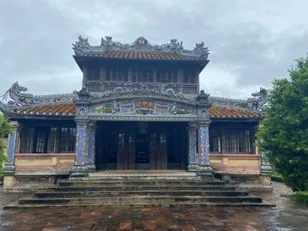 The serene Imperial Library within the Citadel in Hue, a testament to the country’s scholarly past.
The serene Imperial Library within the Citadel in Hue, a testament to the country’s scholarly past.
Cultural experiences abound, from traditional arts like the water puppet show, depicting rural life with enchanting puppets, to local customs like ancestor worship, evident in the numerous family shrines found even in wealthy suburbs of Hue. These practices highlight the deep connection Vietnamese people have to family and tradition.
Interactions with locals, whether studying English by the lake in Hanoi, serving tea in a quiet teahouse, or running market stalls, consistently show warmth and resilience. Even in tourist hubs like Hoi An, known for its tailor shops and lanterns, there’s a desire to connect, though sometimes the market intensity can be overwhelming – a common travel note.
Exploring Diverse Landscapes
The geographical diversity of Vietnam is stunning. Hanoi offers the bustling energy of the capital, steeped in history. A few hours away, Halong Bay presents a landscape straight out of a fantasy, with thousands of limestone karsts rising from the emerald water. Cruising the bay, kayaking through lagoons, and exploring caves like Sung Sot (Cave of Surprises) are breathtaking experiences.
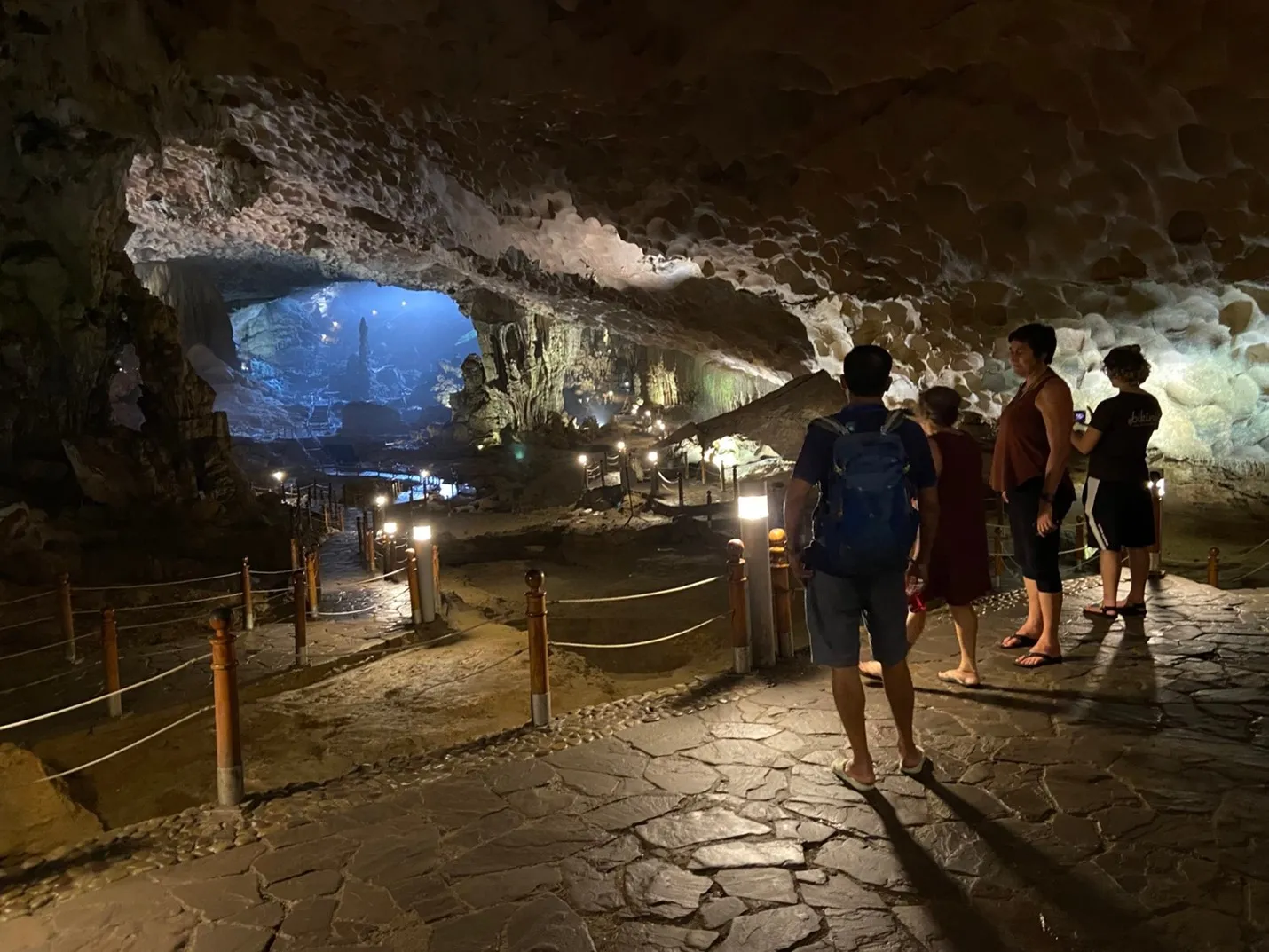 Inside the Sung Sot (Surprise) Cave in Halong Bay, showcasing impressive stalactites and stalagmites.
Inside the Sung Sot (Surprise) Cave in Halong Bay, showcasing impressive stalactites and stalagmites.
Hue, centrally located, sits beside the Perfume River and offers access to imperial history and peaceful countryside. The journey from Hue to Hoi An often includes the Hai Van Pass, offering scenic views, and stops in coastal towns. Da Nang showcases modern development and beautiful beaches.
Hoi An itself is a charming ancient town, famous for its pedestrian-friendly streets, historic architecture, colorful lanterns, and bespoke tailoring. An Bang beach nearby offers a perfect escape for swimming and relaxing by the South China Sea.
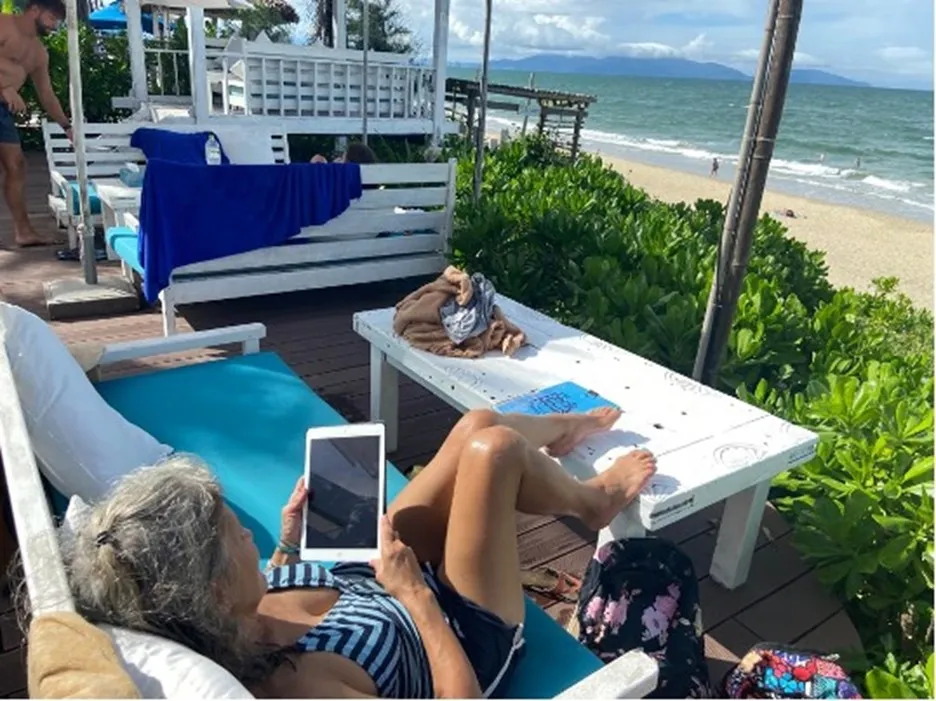 Relaxing on a lounge chair overlooking An Bang beach near Hoi An, a perfect spot for unwinding.
Relaxing on a lounge chair overlooking An Bang beach near Hoi An, a perfect spot for unwinding.
Further south, the Mekong Delta presents a completely different environment – a vast network of rivers and channels, lush with vegetation. Exploring by boat, visiting local workshops (like bamboo weaving or coconut candy making), and experiencing life at a homestay provides insight into rural Vietnamese life, which is deeply connected to the waterways. The pace here is slower, the air thicker with humidity and the scent of tropical plants.
Ho Chi Minh City (Saigon) is the dynamic economic heart of the south. Its energy is palpable, with a mix of historic French colonial architecture and modern skyscrapers. It feels faster-paced than Hanoi, reflecting its commercial hub status.
Practical Notes and Tips
Beyond the major experiences, several practical Notes When Traveling To Vietnam are helpful for smooth travel:
- Currency: Understand the denominations of the Vietnamese Dong (VND). The 1,000, 10,000, and 100,000 notes can look similar. 100,000 VND is roughly equivalent to $4-5 USD.
- Tipping: While not strictly mandatory everywhere, tipping is appreciated, especially in the service industry. Some tours organize a group tipping kitty.
- Communication: While English is spoken in tourist areas, learning a few basic Vietnamese phrases goes a long way. Google Translate is also a very helpful tool.
- Local Gestures: Be mindful of local customs. Crossing fingers, common for luck in the West, is offensive in Vietnam.
- Water: Drink bottled water only.
- Weather: Vietnam has diverse climates. The North can be cold in winter, the Center prone to typhoons (check the season, as we experienced), and the South is generally warm and humid. Pack accordingly.
- Transportation: Internal travel often involves a mix of planes, trains, and buses. Local transport includes taxis, ride-sharing apps (like Grab), motorbikes, and cyclos. Crossing streets requires confidence!
- Shopping: Bargaining is common in markets, especially in tourist areas like Hoi An. Be prepared for vendors to be persistent, but don’t feel pressured. Setting a firm price or simply saying “No, thank you” and walking away is acceptable.
- Supporting Locals: Guides like Bon often recommend supporting local businesses, especially those needing support or offering unique cultural value (like the blind massage spa or small homestays). This “sharing the love” enhances the travel experience and benefits the community.
- External Link Note: For context on various U.S. locations mentioned briefly in travel narratives, you can find information about places like Texas on external resources like Wikipedia.
Reflections on the Journey
This trip solidified my belief that travel should connect you with people and cultures. Vietnam, a nation with a difficult recent past, is home to an incredibly resilient, kind, and resourceful population. The lack of apparent resentment towards Americans, even from those who lived through the war, was profoundly impactful. It underscores the importance of mutual respect and understanding in moving forward.
Travel, in this context, felt like more than just a holiday; it was an act of learning and appreciation. From the bustling streets of Hanoi and the ethereal beauty of Halong Bay to the historical depth of Hue, the charm of Hoi An, and the gentle rhythms of the Mekong Delta, Vietnam offers an endless array of experiences. The food, the landscapes, and most importantly, the people, leave an indelible mark.
These Notes When Traveling To Vietnam are just glimpses into a journey that was rich, emotional, and ultimately, transformative. It’s a country that welcomes you in, feeds you well, and shares its complex story with warmth and openness.
Frequently Asked Questions About Traveling to Vietnam
- Is Vietnam safe for tourists? Yes, Vietnam is generally considered safe for tourists. Petty theft can occur, especially in crowded areas, so be mindful of your belongings. Street crossing can feel dangerous, but it’s manageable with caution.
- What is the best time of year to visit Vietnam? This depends on the region you plan to visit due to the country’s length. Generally, Spring (February to April) and Autumn (August to October) offer pleasant weather across much of the country. Check regional forecasts for specific timing.
- What is the food like in Vietnam? Vietnamese food is fresh, flavorful, and diverse. Staples include pho (noodle soup), banh mi (baguette sandwiches), fresh spring rolls, and rice dishes. Regional variations exist, with more herbs and spices typically used in the South.
- How do you cross the street in Vietnam? Step into the street confidently and walk slowly at a consistent pace. Motorbike traffic will flow around you. Avoid sudden stops or running.
- Should I take a guided tour in Vietnam? While independent travel is possible, a guided tour can significantly enhance the experience, especially for first-time visitors. Guides provide invaluable cultural context, handle logistics, and help navigate practical challenges like transport and communication.
- What currency is used in Vietnam? The currency is the Vietnamese Dong (VND). US Dollars are sometimes accepted in major tourist areas, but it’s best to use VND for daily transactions.
- Is it necessary to bargain in Vietnam? Bargaining is expected in markets and when dealing with street vendors, but not typically in established shops or restaurants with fixed prices. Bargain politely and keep it lighthearted.
